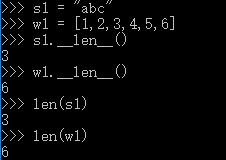python面向对象的三大特性之一多态
多态
多态的特性是调用不同的子类将会产生不同的行为,而无需明确知道这个子类实际上是什么
说白了就是,不同的对象调用相同的方法,产生不同的行为
例如:s1是字符串类型,w1是列表,两个完全不同的对象,他们都可以调用len方法,而得出的结果不同

多态实际上是依附于继承的两种含义:"改变"和"扩展"本身就意味着必须有机制去选用你改变/扩展过的版本,多态实质上就是继承的实现细节;
子类实例化后调用基类的方法,w1.turn_ice()叫做多态;
class H20: def __init__(self,name,temerature): self.name = name self.temerature = temerature def turn_ice(self): if self.temerature < 0: print("[%s]温度太低结冰了"%self.name) elif self.temerature > 0 and self.temerature < 100: print("[%s]液化成水" % self.name) elif self.temerature > 100: print("[%s]温度太高变成水蒸气" % self.name) class Water(H20): pass class Ice(H20): pass class Steam(H20): pass w1 = Water("水",25) i1 = Ice("冰",-20) s1 = Steam("水蒸气",3000) w1.turn_ice() #执行过程中不同的对象调用相同的方法 i1.turn_ice() s1.turn_ice() #或者定义一个接口来执行上面的调用 def func(obj): obj.turn_ice() func(w1) func(i1) func(s1)


 浙公网安备 33010602011771号
浙公网安备 33010602011771号